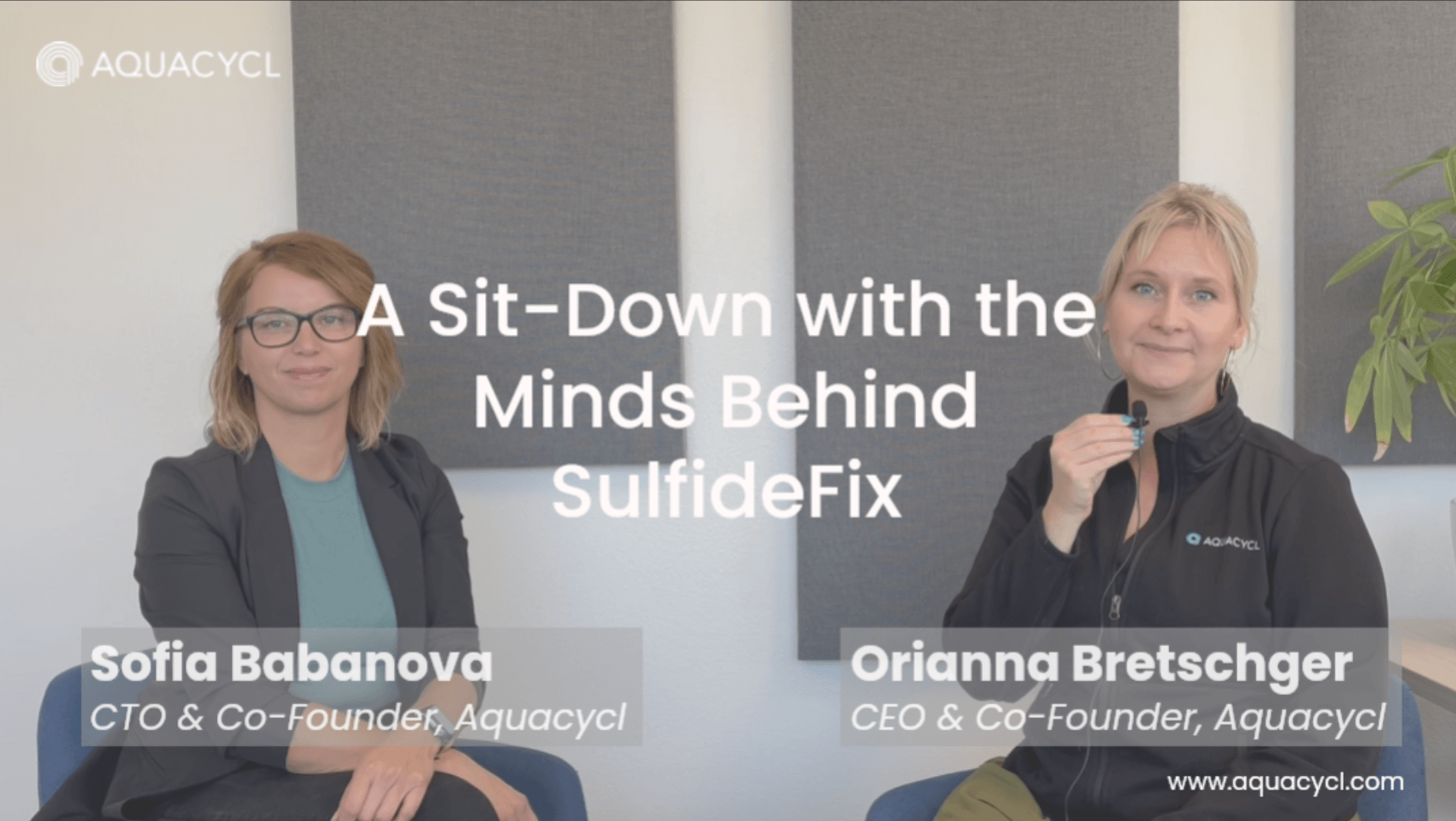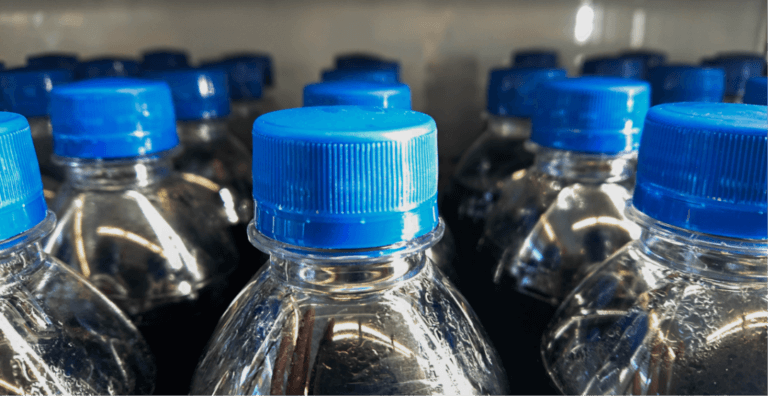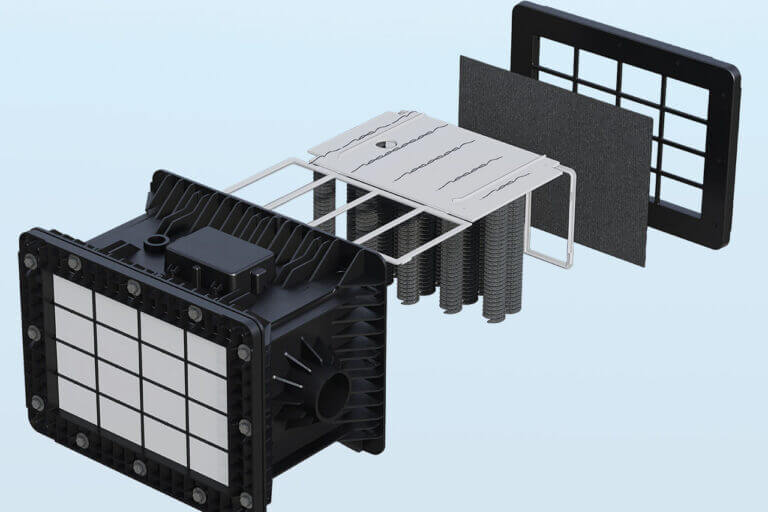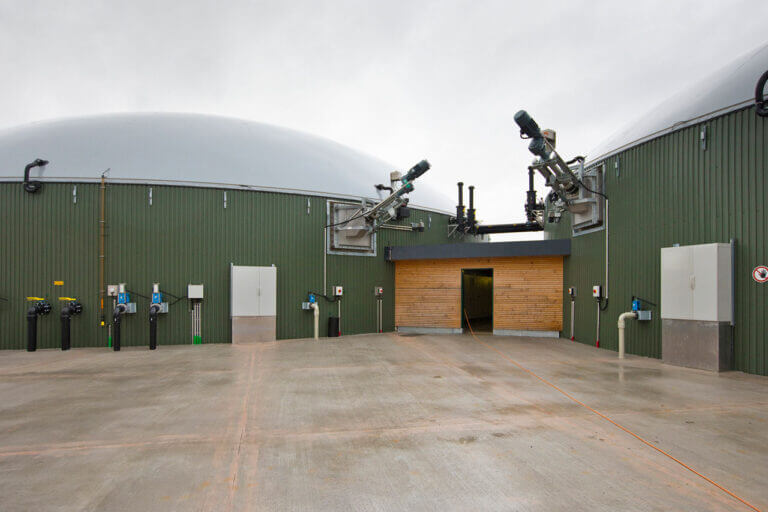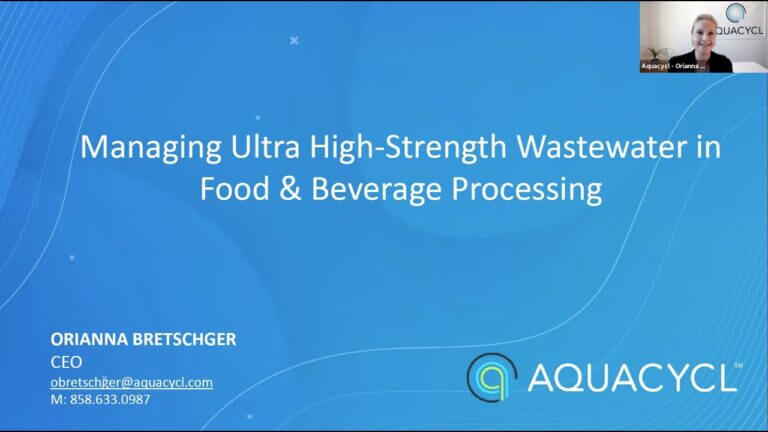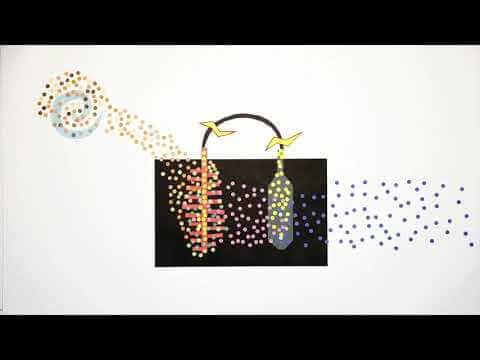When it comes to wastewater management, hydrogen sulfide (H2S) is a major challenge for industrial and municipal facilities. Its toxic nature, corrosive properties, and unpleasant odor create serious safety, environmental, and operational risks. At Aquacycl, this challenge became a catalyst for innovation, leading to the development of SulfideFix, an H2S removal technology unlike any other that addresses these concerns with remarkable efficiency.
In this interview, we speak with Aquacycl’s Orianna Bretschger, CEO and Co-Founder, and Sofia Babanova, CTO and Co-Founder, about the inspiration behind SulfideFix, the hurdles they faced, and the incredible success of this breakthrough technology.
What inspired the development of SulfideFix, and what challenges were you looking to solve with this technology?
Sofia: When we first started Aquacycl, our main technology was wastewater treatment for industrial customers. During the process of optimization and developing the process, we realized that hydrogen sulfide (H2S) has a negative impact on our efficiency. So we developed our product, SulfideFix, for internal use to remove hydrogen sulfide from the water prior to processing through our main technology.
Orianna: We developed the product and had it working, actually, in a commercial deployment in the tanks we were providing. And then we had a customer come to us and say, ‘Hey, we have a sulfide problem, do you guys have any solutions for that?’. I didn’t even think about having this as an independent product at the time, it was just solving a problem for us. We tried a pilot and we were able to prove the case in a customer application, so they went forward with the contract and it’s been running now for over two years.
How did you come up with this innovative design for H2S removal?
Sofia: We started by going through some literature, scientific publications, and so on and we selected what we wanted to do. It [SulfideFix] wasn’t floating in the beginning, it was actually stationary within the tank. But then we realized we have to control the level… which is very difficult when you’re talking about water flow in general.
Orianna: I think that the basis really started with an idea that’s been around for a long time, where soft-cap anaerobic lagoons will blow air with a big blower on one side, but you don’t get good air distribution and it requires a lot of energy. So, we had our idea of a floating manifold with a lot of little air holes to get even distribution of air across the surface, with a really small blower.
Sofia: Actually, we adopted the idea from a farm we went to. This trip really impacted the development of SulfideFix. They had a huge problem with hydrogen sulfide, high levels of 1,000 ppm, and they were saying that they do aeration at the surface and that’s when we started digging a little more into how maybe that’s part of the golden solution.
What were some challenges you faced in the development of SulfideFix?
Sofia: Besides what the process was that we wanted to implement, major challenges on the development of SulfideFix were around the design. It had to be floating on the surface to follow the changes in the water level, we had to be able to install it through a small opening, it has to have an adaptable design to scale up and down, or modular to have multiple units in a bigger vessel. So, once we figured out which way we wanted to go scientifically-wise, it was then how can we make it work design-wise.
What sets SulfideFix apart from other H2S removal technologies?
Sofia: One is simplicity. It’s a very simple, cost-effective, not heavy on hardware solution. The Micro-Aeration technology, because it provides air at the water interface instead of blowing air into the water, is also extremely low energy. We are not adding any chemicals, it’s a biological process.
Orianna: It’s a biological process without it being a huge, separate biofilter. And we make sure that the sulfide never leaves the tank. It [hydrogen sulfide] is always going to be evolving in the bulk of the water, but we install mixers so the sulfide comes up to the surface and we trap it right at the surface. Anything that’s also already there, from filtration to dry scrubbers, will work better, longer and with less energy. You don’t have to add an extra tank, you don’t have to add a bunch of extra equipment, it’s automatically monitored, the blowers are small, and it’s easy to retrofit into existing systems.
Did you see any unexpected or surprising results from the early installations of SulfideFix?
Orianna: The first time we piloted this as an independent product, we were with a client and conducted a trial where we learned a lot of interesting things. We were surprised to see 90% reduction of hydrogen sulfide in the headspace and the bulk of the water. We were anticipating closer to 50% or 60%, and we saw consistently 80% to 90% removal.
Sofia: The really interesting part was when we moved from a pilot into an actual installation, the smell disappeared within two days. So, from hydrogen sulfide of around 100 ppm, it went down to less than 1 ppm in a couple of days. And we were expecting a month of startup time, and then two days later, no smell whatsoever!
Orianna: That was a huge surprise. Not one we will guarantee in every situation [insert legal jargon here], but the fact that that the smell went away almost instantaneously was great.
Another surprise revelation from our first install was when we put in the onsite gas monitoring sensor. We were anticipating, and our KPI was, to hit around 5 ppm of sulfide. We were starting with 100ppm and had to make sure it was around 5 ppm. But it’s been consistently below 1 ppm for the last two years. Plus, there is little to no methane or hydrogen so we’re not evolving unintended problems via explosive gases, either.
🔗Check out this case study for the results from this first installation!
What was the initial reception from early adopters?
Orianna: I had some funny conversations with the Corporate Health and Safety folks that came in for this installation. We’d give the presentation, we’d show the pilot results, we had the plan for the full installation and we’d get a lot of these, ‘This seems too good to be true’ statements, very nicely delivered, but we heard that a lot. However, with their support, we advanced forward and we were able to show results really quickly at scale, and we got some converts there, which was great.
The fact that they are renewing their service plan, now on their third renewal, I think demonstrates the fact that we are solving the problem.
Sofia: They were a little skeptical at the beginning. It’s, as Orianna mentioned, too good to be true. But the system was down for a little bit (due to a plant-wide power outage) and they gave me a call, ‘Can you come and fix it ASAP because it smells!’ So that was a perfect indication that it’s actually doing what we said it’s going to do.
Where do you see SulfideFix expanding to in the future?
Orianna: What we’ve learned talking to clients at tradeshows and talking to existing customers, is that this is a really big problem. And so we’ve now had many inquiries about how the system works and if it can be applied to open tanks as opposed to a closed tanks, can we work in open lagoons, rivers, collection systems – like sewer systems. The answer is probably! We need to validate it, but we know it will work in pretty much any tank that holds a volume of wastewater that has carbon and sulfate. However, removal efficiency will be different based on application specifics.
If you have a hydrogen sulfide problem, we are ready to talk to you. Let us know your application, challenges and how we can help!
Watch the full interview below for more insights from the minds behind SulfideFix:


